| Umělec magazine 2005/2 >> First Moscow Biennale:A Warm Place in the Cold | List of all editions. | ||||||||||||
|
|||||||||||||
First Moscow Biennale:A Warm Place in the ColdUmělec magazine 2005/201.02.2005 Dmitry Bavilsky | Moscow Biennale | en cs de |
|||||||||||||
|
In other countries, biennales are planned to attract tourists during high season. The art presentation in Moscow may have been aimed to accomplish some esoteric objective. Otherwise it is impossible to understand what and for whom this one was intended.
The First Moscow Biennale was supposed to demonstrate that our day has come. For a whole week of the month-long exhibition, art critics and bohemians skipped from one exhibition to the next. By the end of the second week, the initial excitement had died down, and visitors were able to stroll easily along quiet and darkened hallways with video artifacts winking at their own reflections flickering upon waxed parquet floors. I am not snarling or depreciating the efforts made by the organizers. Indeed, there has been unprecedented interest in contemporary art by Moscow residents and visitors. It must be a common thing: sold out in the beginning and after some time, total emptiness ensues… Second, it was important to organize a meeting of a global team and local homegrown masters, thus proving (to ourselves, of course) that we are no worse. OK, we did it. The Modern Russian artists looked better than the imported ones. More charismatic. More stylish. More interesting. Wittier. This especially refers to the exhibitions, which were completely composed of Russian works. Those were Starz, a pathos-laden exhibition installed in a branch of the Moscow Contemporary Art Museum, and dissident-like Russia-2 located in the Central House of Artists. Russians are Coming The Starz featured the most promoted and famous, both in Russia and abroad, names and brands: Oleg Kulik, Vladislav Mamyshev-Monroe, Vladimir Dubosarsky and Alexander Vinogradov, the AES+F group: Tatiana Arzamasova, Lev Evzovich, Evgeny Svyatsky. Each brand received a story to display their work. Small retrospective reviews were created: technological photos by the AES members; big kitsch works by Dubosarsky and Vinogradov, which either reanimate or bury painting; refined installations by Kulik including his new work, a wax figure which represents Leo Tolstoy. Real chickens defecate onto the figure and their guano embalms the already dead great. The most famous gallery owner, Marat Guelman, symbolically assembled another big exposition of Russian contemporary art. Guelman had withdrawn from collecting art objects, and moved to policy making. When his love affair with power failed, Guelman returned to the cultural arena and began his dialog with power on his home territory. Guelman has always been the most politicized gallery owner in Russia. Again, his exposition in the Central House of Artists gave rise to unfavorable criticism and provoked the most significant scandals ever. Some of the artists presented at Russia-2 were used. The intention of this art provocateur succeeded again since his exposition consciously had a dissident aftertaste. Guelman decided to build an image of a parallel Russia, a country with a radiant and democratic future, a liberal and really freedom-loving country. Artists did their best. The results were easy to catch and edifying. Almost all Guelman’s exhibitions have this publicist and sarcastic critical message, though. Why then did a scandal burst out during the international art forum? Guelman, who until recently was in charge of the analytical department of a major Russian TV station, is well aware of the importance of the link between art and media. It is not the essence that inspires the viewers’ reactions, but a concentration of media energy. This is why Marat Guelman can be considered the most outstanding Biennale curator though he was not among the official curators. His major stars, the Siniye Nosy (Blue Noses) group—Alexander Shaburov and Vyacheslav Mizin—can be considered major artists. Sorrowful Insensibility It is appropriate to begin this review with the two particularly Russian exhibitions of the Moscow International Biennale. A discussion of the central exposition comes second; the reason is simple. Despite the authority of the curators—Daniel Birnbaum, Rosa Martinez, Hans Ulrich Obrist, Nicolas Bourriaud, Iara Boubnova, and Joseph Backstein—it proved indistinct and shapeless. These curators selected five artists each. The artists seem to have been selected particularly for installations, for sorrowful insensibility, which modern artists record. I did not like the expositions at all. It is not because I compared it with what I had already seen before. Of course, everything is different in Moscow; but the works were really indistinct and shallow. It would not even be fair to describe them as too socially engaged. The organizers must have been short on time. Joseph Backstein, who represented Russia in the curatorial Areopagus, complained that work on installation started too late and there was insufficient time to complete many things. The main (!) exposition was made for no other reason than for the sake of appearance, as everyone could plainly see. This is in contrast to the “minor expositions” prepared with loving care by Marat Guelman, or Olga Sviblova, or, say, Andrey Erofeev, who exhibited the best “historical” exposition entitled Accomplices: Collective and Interactive Works in Russian Art of 1960-2000. The main exposition was an illustration of how too many cooks spoil the broth. Young stars from the international scene failed to form a unified art opinion. They failed to take any unified shape. Those were people of every description. Again, the Russian Blue Noses stood out against the background. Their powerful work involved cardboard boxes lined up on the exposition-hall floor. Inside them were video images of figures projected from above—naked and aggressive little men. In one box, they have unceasing intercourse, they fight in a second, and play billiards, pocketing a ball into a live vagina in a third box. The fourth box is a bed in which the leader of the international proletariat tosses and turns and fails to fall asleep. It is simple and easy to understand, and tasteful. National identity (within reasonable limits), wit, simplicity, recognizable images, and drive are combined here. It seems the Blue Noses did it anyhow. By the way, Tyap Lyap (Anyhow) was the name of their autumn exhibition in Guelman’s gallery. However, they cannot be taken for anything else. If it were not for those boxes with video, it would have been futile to go to the Lenin Museum, where the main exposition was located. Newspapers wrote about the “unprecedented standard of quality” of the main exposition. Perhaps I am spoiled or have seen more than the newspaper critics; I doubt it, but I think that any provincial center of contemporary art can outdo our international exposition in terms of quality and diversity. From this perspective, the building itself, with its beautiful view of the Moscow hotel and the Bolshoy Theater, was the object of the exhibition. Boltanski Hanging That said, there were exceptions. In a tumbledown wing of the Architecture Museum, an installation by Christian Boltanski featured refrigerated overcoats. They were hung out on various levels, electric bulbs hanging alongside. And nothing else. But staring at this enchanting sight one understands that there has not been anything so beautiful, graceful, and exact for ages. Boltanski performed as a genius of space as he made perfect use of the run-down building, the sounds of the city, the chilly air, and ruins. He created an artifact on par with the highest global standards, which immediately highlights who is who. Boltanski is great indeed and his greatness is not limited to a simple ability to achieve such an effect with minimal means. Great artists are characterized by the ability to layer several meanings within a single subject. This is where too many components come together: thoughts of death, Jewishness, general existential problems, and social problems. Boltanski shoots point-blank. His additional installation, about Odessa, was less strong and more provincial. Even though the cloth canvas, on which he printed the eyes of the late people represented on antiquary photos, did impress the viewers once they understood that the canvas was flapped by fan heaters. Moscow House of Photography, Open Window Another important center of this Biennale was the Moscow House of Photography (MHP) led by Olga Sviblova. MHP – is a real open window, through which good and intelligent art regularly breezes into our city. This time, due to Sviblova’s efforts works by “minor” participants of the forum did not pale even beside such sacred giants as homosexual rebel Robert Mapplethorpe who came to the Russian capital for the first time. It is here where the official opening of the Biennale happened for me. So many people came that it seemed that… Well, I don’t know. I was attacked by claustrophobia and burdened with traces of misanthropy against a background of indifferent and exhausting contemporary art of various sorts and quality. Mapplethorpe and mannerist etchings are on the ground floor. Mass media so excessively covered the exhibition that finding anything new is impossible. What aura can a photograph have? Walter Benjamin wrote about the altered essence of artifacts in the era of photographic repetition. From this point of view, in a museum the photograph is water-based even if it is deckle-edged as if done by hand. This is why it is enough to look at pictures in magazines or catalogs. Only something that you see for the first time can have a profound affect. Moscow has a striking talent of reducing even the most daring undertakings to zero and dust. What once used to seem impossible now tires with excess. A new project of the AES group—a huge glamor photo panorama displaying children, rifles, and alleged absence of eroticism—is also on the ground floor. The strength of its influence is in its excessive beauty and gloss. It is excess that shuts itself off from reality by its wall of beauty and inaccessibility. The first floor hosts an installation and performance by Andrey Bartenev. Loud speakers stick to curved arches like flower buds. Bartenev asked everyone to pronounce “I love you” through a microphone; the phrase rushes between the loud speakers and jumps out from all corners followed by music for the performance Dirty Eve, by famous Moscow creator Boris Berger. In the same place, there are large photos by Olga Chernysheva: garden-plots fenced in by screens and all sorts of devices. They are simultaneously uneasy and melancholic. In the same place, there is an indistinct installation by sailor Alexander Ponomarev. Water streams flow and compasses go round following Ponomarev, who moves round the hall. There is also an even less distinct installation of washed Chinese landscapes by Maria Serebryakova. The second floor hosts a very sweet installation by Grisha Bruskin called With You in My Mind. These are revolving squares illuminated from inside what looks like bookstore stands for paperbacks. They contain antique photos and comments, reminiscent of small pictures by conceptualist Leo Rubinstein. Bruskin seems to be commenting on family album photographs, suggesting sharing the past. At the same time, some captions do not coincide with the images and you have to interpret them. However, while you are reading, captions pass by as the whole construction unceasingly goes round. You cannot coincide with either photos, or comments, or someone’s past. Finally, two very powerful videos by Israeli artist Michal Rovner are displayed in dark rooms. She is also present giving numerous interviews in the darkness of the dim hall together with Olga Sviblova. Two videos are shown on big screens in two halls. In the center of a white panorama, washed and erased small black human figures dance in a ring. They look like insects, or fallen leaves, or bacteria that ecstatically merge into a multi-headed body without organs. The body then falls into pieces which march disorderly wherever one wishes. The same figures are on the other screen, against a snow white background. They march from the edges towards the centers as in the Russian folk nursery rhyme, “We have sown millet; we’ll trample it down” (In this ritual nursery rhyme players dance and sing in two rows, remaining opposite each other. They approach each other and then, step back by turns). Then they merge into a black mess. It is us; we flock to the slaughter-subway or fuss at this opening as featureless molecules under a microscope. But the strength is not in the message. There is no message. You invent it yourself. The strength is in captivating a psychedelic image. When in a dark room you watch dark as if burnt figures devoid of differences for a long time, side vision turns on and new effects are revealed as in three-dimensional pictures. People lose anthropomorphism once and for all, and turn into merging and splitting abstract structures. And there is no vanity because poetry is not a demigod’s caprice; it is the captivating gaze of a simple carpenter. The quality of personality manifests itself by the level of thinking and ability to captivate a precise and striking metaphor, to captivate a viewer taken aback in the middle of a crowd heated by free drinks. I usually feel like running away from video installations. Is this in my way; or in their way? Everything is sort of clear from the first glance. You have caught on to the idea and you may go farther. And they sort of demand a closer look and you have to make an effort. With Rovner no effort was needed. It immediately absorbed me. Tusovka Tusovka = Russian for informal artistic communities - a collective of people with common interests. [eds] The absence of sensation turns donors into vampires. One tires of the crowds and lack of esthetic impressions. I noticed long ago how this or that exhibition tires and undermines the normal state. Nice to meet you. Nice to meet you too. Tusovka is disgusting. It is not possible to create anything after it. It erases everything it can. Just before the opening, one of the Biennale curators, Nicolas Bourriaud, in his interview with the Kommersant newspaper said that modern western art develops within the “esthetics of interpersonal relations.” His whole interview was about the “esthetics of interpersonal relations.” Sure, the museum organizes crowds into artifacts and this is the main achievement of art. Video Messages We then went to see Bill Viola at the Alexander Pushkin State Museum of Fine Arts. The starting-point is a well-known representation of a painting from the Renaissance, Jacopo Carucci’s Visitation of Elizabeth to Mary, by means of video. The action takes place underneath the stairs in a hall reconstructed with funds from some powerful corporation. A sign on the door warns that the room can admit 50 people at most. It is Sunday night on the eve of the final night, and the hall is overcrowded. The old master Carucci could have fit in perfectly at the exhibition himself. Then, a rhyme would have been perfect and complete. With or without this, it was obvious that Viola failed to affect the viewers. First, it was too beautiful; second, too static; third, absolutely non-topical. Multiple messages could be found. However, you feel too lazy to do it. Nothing prompts it. Sure, there were psychedelics, emotions, sound-screen (the soundtrack included buzzing as if from an engine), and stretched and compressed chronotopos. However, in contrast to the great Italians exhibited in the museum, the video grows old quickly. The message and experience melt, digested by culture. Viola is chewed up and regurgitated. As a result, all critical reviews about Viola’s video were incredibly poor in interpretation, amounting to little more than enumerations of realities from the press release. With rare exceptions, it is very difficult to work with video; it is difficult to watch video. It is flashy and animated on the surface and absurdly static inside. Few are able to jump out of this magic circle of technological slavery. In Viola’s glossy video there was not a single wound. Nothing caught my attention however hard I tried to get inspired. It seemed impossible to enter this peculiar meditative rhythm, pick it up, and put it on something like a diving-suit. But this happened to me when I saw Rovner’s works. Maybe too much commotion around? I held my breath. Aha, if I smoked some grass I might get inspired… But with weed, you can find inspiration in just about anything. We nearly galloped through the gallery of empty halls with all sorts of empty and shallow videos on the first floor of the Architecture Museum. The videos demonstrated somebody’s departure, people seeing somebody off, slanted black-and-white eyes, some stupid cartoons. Sea Level Unchanged Moscow is a strange place. The metropolis chews up, swallows and spits out everything it manages to masticate and regurgitate, without suffering any sea-change. No doubt, such a considerable quantity of quality contemporary art has never been observed in Moscow’s center. On the other hand, there might be more to say… Local galleries clutter the city map like capillaries. They work, produce and exhibit a wealth of interesting art. Since the Biennale presented no special discoveries to anyone even slightly up to date with the Moscow art scene, this review has focused on that which interested me personally—on peculiarities of perception of “international greats.” Indeed, they have a peculiar destiny in Russia. As another matter entirely, contemporary artists and curators have never received such carte blanche from the author- ities and mass media before. The advertising campaign was massive and extensive. Now even art bureaucrats know that there is a Russia-2 in Russia. That is good; it is a result. People of one circle managed to conduct a review of their own achievements, which they diluted with several outsiders. It was a sort of open national championship for contemporary art. Those who managed to take advantage of the occasion, like Marat Guelman or Zurab Tsereteli, won. A typical debate among Slavs. The barbarism of the Russians, whose wagon train got stuck in a snowdrift.
01.02.2005
Recommended articles
|
|||||||||||||
|
04.02.2020 10:17
Letošní 50. ročník Art Basel přilákal celkem 93 000 návštěvníků a sběratelů z 80 zemí světa. 290 prémiových galerií představilo umělecká díla od počátku 20. století až po současnost. Hlavní sektor přehlídky, tradičně v prvním patře výstavního prostoru, představil 232 předních galerií z celého světa nabízející umění nejvyšší kvality. Veletrh ukázal vzestupný trend prodeje prostřednictvím galerií jak soukromým sbírkám, tak i institucím. Kromě hlavního veletrhu stály za návštěvu i ty přidružené: Volta, Liste a Photo Basel, k tomu doprovodné programy a výstavy v místních institucích, které kvalitou daleko přesahují hranice města tj. Kunsthalle Basel, Kunstmuseum, Tinguely muzeum nebo Fondation Beyeler.
|







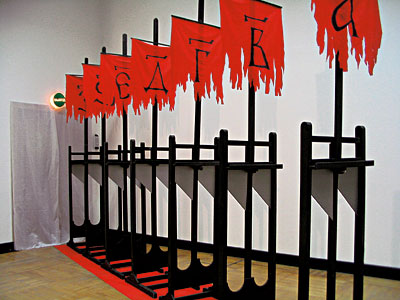



















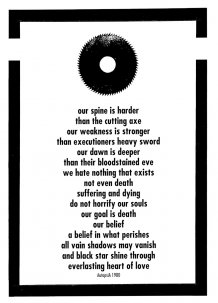




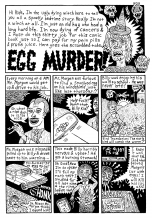
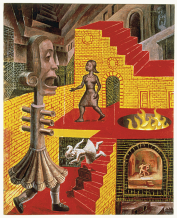
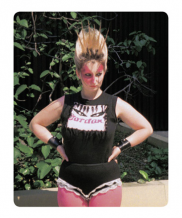
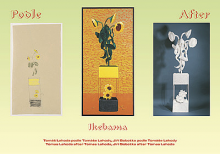


 We Are Rising National Gallery For You! Go to Kyjov by Krásná Lípa no.37.
We Are Rising National Gallery For You! Go to Kyjov by Krásná Lípa no.37.
Comments
There are currently no comments.Add new comment